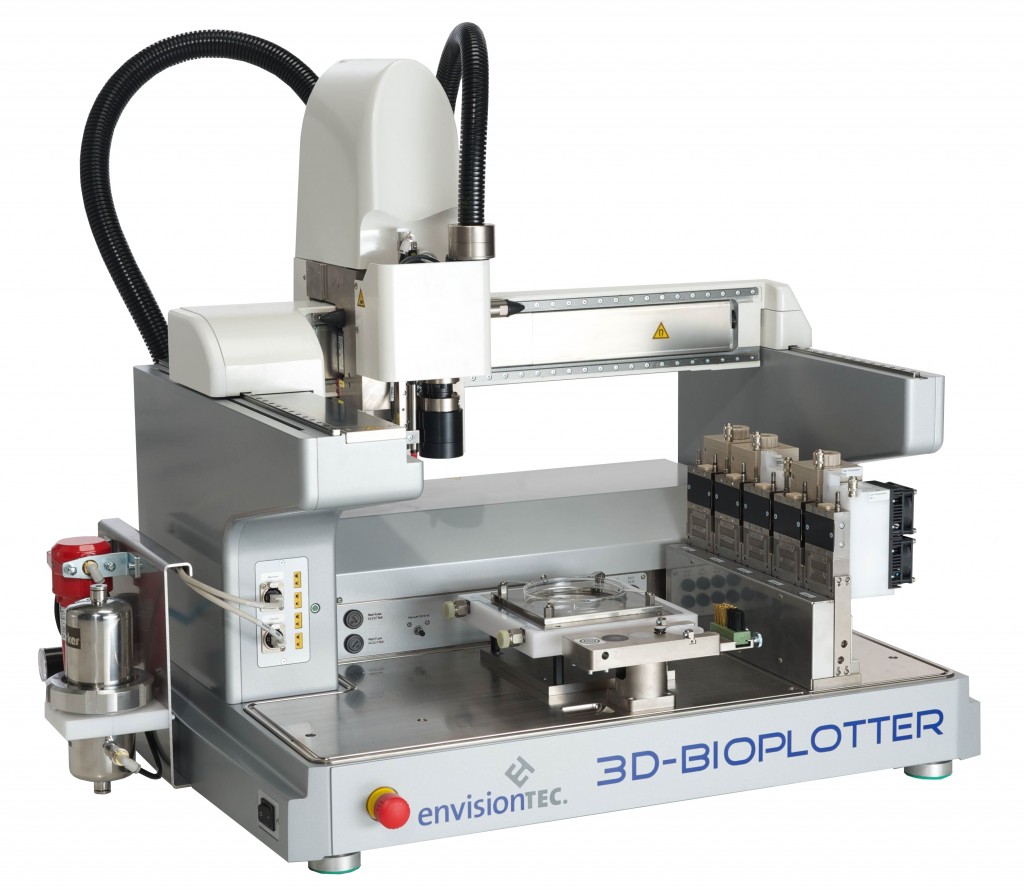3DPI’s Andrew Wheeler recently reported on how Northwestern University Dr. Shah’s TEAM (Tissue Engineering And Manufacturing) Lab has been using 3D printing to experiment with some of the most fascinating materials, including graphene and multi-material hydrogels. Now it is time to move into yet another interesting area: metal 3D printing, and the most fascinating part is that all are done through the same 3D printer: EnvisionTEC’s 3D Bioplotter.
“We have been working with variety of different materials, from hydrogels that can be used for printing cells, to what we call particle-based inks, which are mixtures of polymers, ceramics, metals and hybrids of a variety of different materials. So, we’re trying to really push the limits of what we can produce using metal-based printing,” Dr Shah explains.
The advantage of using an syringe extrusion based system is that 3D printing of these inks takes place ambient temperature “We have been formulating different inks so that we can print at room temperatures in order to incorporate cells or other agents that favor regeneration,” Dr Shah continues, “the news is that we’re expanding it beyond the biomedical realm by finding new ways to produce metallic or even ceramic objects.” The 3D bioplotter is thus used to 3D print the “green bodies”, which are then post-processed by heating them in a subsequent phase.
This approach is naturally more affordable than laser based metal 3D printing. Also there are limitations as to which metals can be laser sintered. Dr Shah’s team has already had success in using 3D Bioplotter to 3D print with metal oxides, which can be used for biomedical applications such as implants and hybrid implants.
“A significant part of our efforts here is to expand the bio-material and material portfolio when it comes to 3D printing,” Dr. Shah points out. “The 3D bioplotter is basically a tool that enables us to develop our own inks, but really there are a lot of other printers that are compatible with our inks. What makes the bio-plotter a preference for us is the friendly user interface and its materials management system.”
“The software gives us the capacity to change parameters while printing, and give us a greater degree of control when we’re trying to create the most sophisticated architectures using multi-materials. We can print ceramics and metals together into one object and create a functional device for multiple different hydrogel materials, so the capacity to be able to control where the material is placed is really important,” Dr. Shah says.
Having spent the last several years expanding the range of materials that can be extruded allowed the TEAM lab to acquire a unique materials expertise. They are now using this experience to research applications in the biomedical field, testing them for bones, cholesterol, kidneys, liver and cardiac tissue regeneration. One of the most interesting aspects is that the same EnvisionTEC 3D bioplotting process is also being used to research materials that can be used to make better batteries and fuel cells.
“We acquired the bioplotter in 2010 and we started getting into materials development in 2011,” Dr Shah says. “Now we’re working with metallic and ceramic hyper-materials and using 3D printing to create more efficient manufacturing methods,” she goes on. “Now – Dr Shah concludes – we have the capacity to really push the functionality with ink for specific applications.”
This might even mean developing bioinks and other 3D printable advanced materials as commercial consumables for advanced bioprinters. This will depend upon the bioprinting market dynamics and the machines installed base. Judging upon the rate of adoption and the availability of more and more systems for bioprinting specific needs, it looks like the bioprinting consumables market is going to run right along the standard 3D printing consumables market, growing an opening up new possibilities in every single segment of manufacturing.





